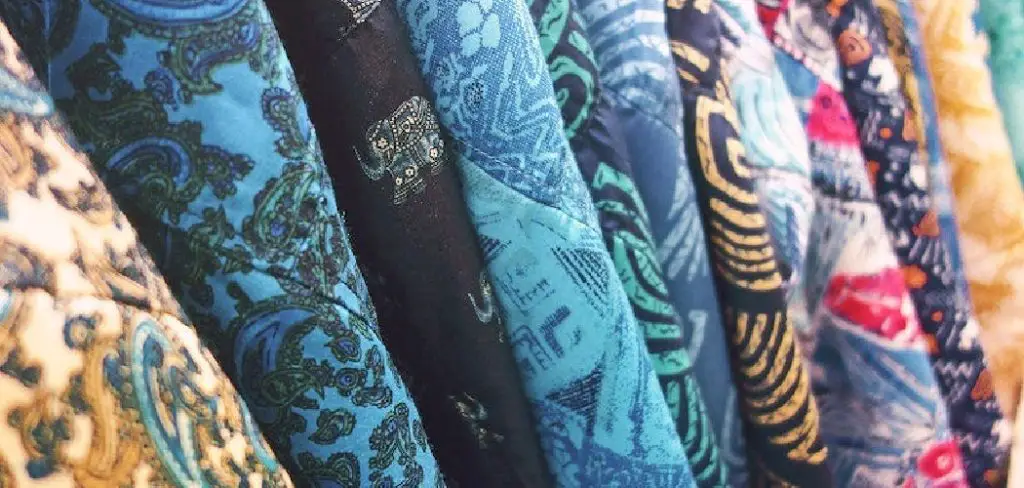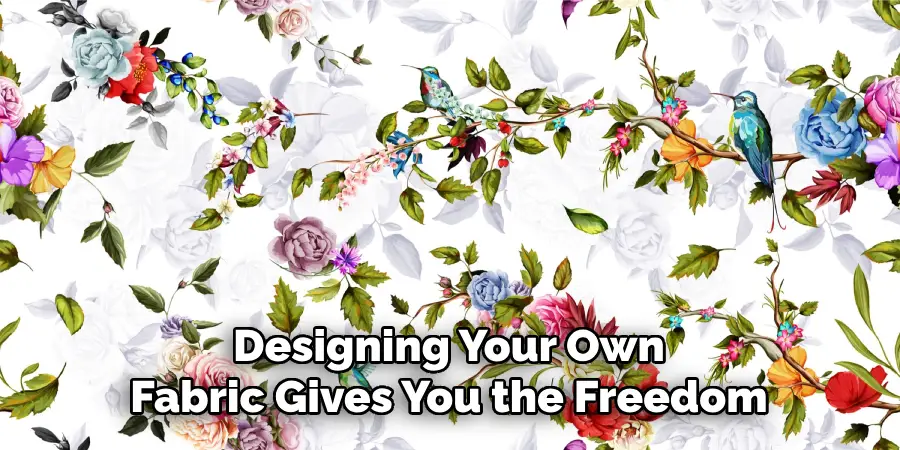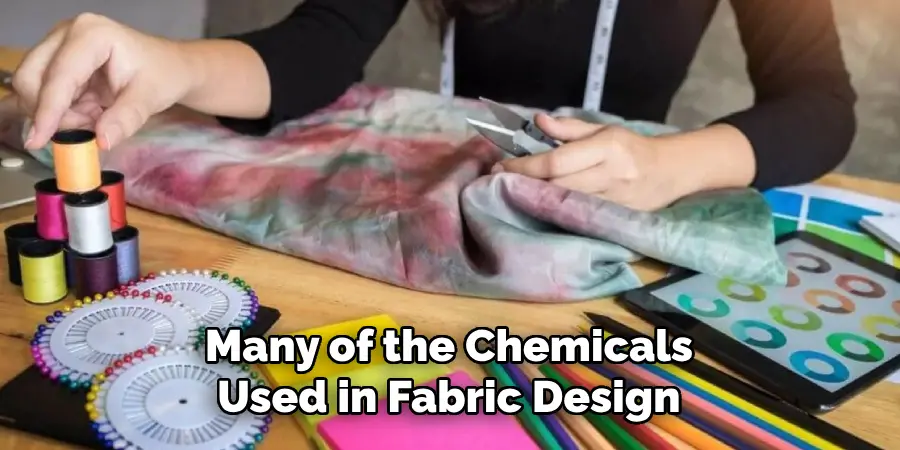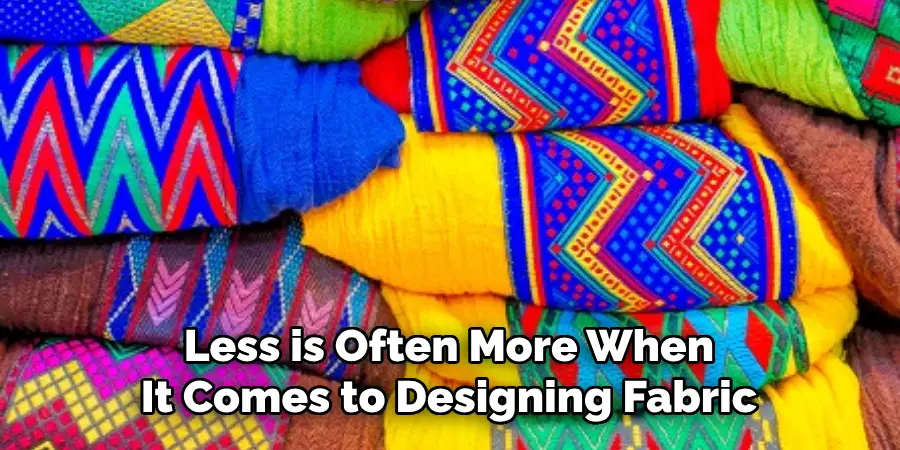Designing your own fabric allows you to express your creativity and individuality in a unique way. Instead of purchasing pre-made fabrics, designing your own fabric gives you complete control over the colors, patterns, and textures that are used.

This not only makes it one-of-a-kind but also ensures that it perfectly matches your vision for a project. Whether you are creating clothing, home decor, or accessories, designing your own fabric allows you to elevate the overall look and feel of your finished product.
The main advantage of designing your own fabric is that you have full control over the design and quality of the material. You can choose from a wide variety of materials, patterns, and colors to create unique and personalized fabric for your project. In this blog post, You will learn in detail how to design your own fabric.
Importance of How to Design Your Own Fabric
1. Express Your Creativity
Designing your own fabric allows you to express your creativity in a unique and personal way. You can create something that is truly one-of-a-kind, reflecting your individual style and personality.
2. Cost-Effective
Purchasing designer fabrics can be expensive, especially if you have a specific design or pattern in mind. By designing your own fabric, you can save money and still achieve the desired look.
3. Suitable for Any Project
Designing your own fabric gives you the freedom to choose the type of fabric, color scheme, and pattern that best suits your project’s needs. Whether it’s for clothing or home decor, you can customize your design to fit any project.

4. Eco-Friendly
By designing your own fabric, you have more control over the materials used and can choose sustainable options. This helps reduce waste and promotes eco-friendly practices.
5. Unique Gifts
Designing your own fabric also allows you to create unique gifts for friends and family. You can design something special that they won’t find anywhere else, making it a truly thoughtful and personalized gift.
Step by Step Processes for How to Design Your Own Fabric
Step 1: Inspect the Fabric
Start by examining the fabric you want to design on. This will help you understand its properties and texture, which will influence your design choices. Decide on the method you want to use for designing your fabric. You can hand-paint, block print, screen print, or use digital printing methods.
Step 2: Gather Design Materials
Based on your chosen design method, gather all the necessary materials such as fabric paints, printing blocks or screens, stencils, and digital design software. Spend some time sketching out your design ideas on paper. This will help you visualize the final product and make any necessary changes before starting the actual process.

Step 3: Create Your Design on the Fabric
Using your chosen design method and materials, transfer your sketched design onto the fabric. Make sure to follow any specific instructions for the chosen method. Once your design is completed, allow it to dry completely before setting it. This will ensure that the colors stay vibrant and do not wash out.
Step 4: Heat Set the Design
Depending on your chosen design method, you may need to heat set the fabric to make the design permanent. Follow any instructions provided with your materials. Before using your fabric for a project, it’s important to test it first. This will help you identify any potential issues and make adjustments if needed.
Step 5: Wash and Dry the Fabric
If your fabric passes the test, you can wash and dry it according to the fabric’s care instructions. This will help remove any excess dye and set the design even further. Once your fabric is dry, iron it to smooth out any wrinkles and give it a polished look. Be sure to use the appropriate heat setting for the type of fabric you have.

Step 6: Incorporate Your Fabric into Projects
Now that your fabric is designed and ready to use, it’s time to incorporate it into your desired projects. Don’t forget to share your unique fabric designs with others! Whether it’s on social media, at craft fairs, or by giving them as gifts, spread the joy of designing your own fabric with others.
By following these steps and unleashing your creativity, you can design your own fabric and bring your unique vision to life.
Safety Tips for How to Design Your Own Fabric
When it comes to designing your own fabric, it can be an exciting and rewarding experience. However, like any creative project, it is important to take safety precautions to ensure that the process is both safe and enjoyable. Here are 7 safety tips you should keep in mind when designing your own fabric.
1. Use Protective Gear
Fabric design often involves using chemicals such as dyes, bleaches, and fixatives. These chemicals can be harmful if they come into contact with your skin or eyes. It is important to wear protective gear such as gloves, aprons, and safety glasses when working with these substances.
2. Work in a Well-ventilated Area
Many of the chemicals used in fabric design can produce strong fumes that may cause respiratory problems. To avoid any potential harm, it is recommended to work in a well-ventilated area. If possible, open windows or doors to increase air circulation while working.

3. Avoid Ingestion
While this may seem obvious, it is important to reiterate that the chemicals used in fabric design should not be ingested as they can be toxic and harmful. Make sure to keep all chemicals out of reach of children and pets.
4. Read Instructions Carefully
Before using any chemicals, make sure to read the instructions provided on the packaging carefully. Pay attention to any warnings or precautions that may be mentioned, and follow them accordingly.
5. Keep Your Workspace Clean
Designing fabric can get messy, but it is important to maintain a clean workspace. This will not only help with the safety of your project, but it will also make the design process more efficient.
6. Use Proper Tools
When working with chemicals and fabrics, it is important to use the right tools for the job. For example, using a designated dye brush rather than a random paintbrush can prevent any contamination or reactions between different substances.
7. Dispose of Chemicals Properly
After completing your fabric design, it is important to dispose of any leftover chemicals properly. Do not pour them down the drain or discard them in regular household waste. Instead, look for community resources or hazardous waste disposal sites where you can safely dispose of these substances.

By following these safety tips, you can enjoy the process of designing your own fabric without any potential harm or risks. Stay safe and have fun creating your own unique and personalized fabrics.
Are There Any Specific Techniques or Methods for Designing Fabric?
When it comes to designing your own fabric, there are countless techniques and methods that you can use. Some popular techniques include tie-dyeing, block printing, screen printing, and digital printing. Each method has its own unique process and results in different effects on the fabric.
Tie-dyeing involves twisting, folding, or tying fabric before applying dye to create vibrant, swirled patterns. Block printing uses carved blocks of wood or linoleum to stamp designs onto fabric with ink or paint. Screen printing involves using a stencil and a squeegee to push ink through a mesh screen onto the fabric.
Digital printing is a more modern technique that uses specialized printers to transfer digital designs directly onto fabric. This method allows for intricate and detailed designs to be printed onto the fabric.
Whether you choose to use one specific technique or a combination of different methods, the key is to experiment and have fun with the process. There are no set rules when it comes to designing your own fabric, so don’t be afraid to try new techniques and see what works best for you.
What Are Some Common Mistakes to Avoid When Designing Fabric?
Designing your own fabric can be a fun and rewarding experience. Not only does it allow you to express your creativity, but it also gives you the opportunity to create something truly unique. However, as with any creative process, there are certain common mistakes that can hinder the success of your fabric design. In this section, we will discuss some of these mistakes and how to avoid them.
1. Not Considering the Fabric’s End Use
One of the most common mistakes when designing fabric is not considering its end use. It’s important to keep in mind what your fabric will be used for, whether it’s for clothing, home decor, or other applications.
Different uses may require different types of fabric with specific properties such as durability, stretch, or weight. By not taking into account the end use of your fabric, you may end up with a design that looks great but doesn’t function well for its intended purpose.
2. Using Too Many Colors
While it can be tempting to use a wide range of colors in your fabric design, this can often lead to a busy and overwhelming result. It’s important to remember that less is often more when it comes to designing fabric. Stick to a color scheme of 3-4 colors and use them strategically in your design. This will create a cohesive and visually appealing fabric without overwhelming the eye.

3. Not Testing Your Design on Different Fabrics
Designing fabric requires more than just creating a beautiful pattern or print. It’s important to test your design on different types of fabrics to see how it will look and function. Some designs may look great on one type of fabric but not translate well onto another. By testing your design, you can ensure that it will work well for its intended use and avoid any surprises when the fabric is produced.
4. Neglecting the Importance of Scale
Scale refers to the size of your design elements in relation to the fabric. Neglecting scale can lead to a design that looks too busy or lacks impact. It’s important to consider the scale of your design and think about how it will look when repeated across a larger piece of fabric. Play around with different scales and take into account the intended use of the fabric to create a well-balanced and visually appealing design.
5. Overlooking the Importance of Placement
Placement is another key aspect of fabric design that is often overlooked. The placement of your design elements can greatly impact the overall look and feel of your fabric.
It’s important to consider how your design will be arranged on the fabric, whether it will be placed in a random or structured manner, and how it will look when repeated. Taking the time to carefully plan out the placement of your design can make all the difference in creating a successful fabric.
Conclusion
In conclusion, designing your own fabric can be a fun and creative process that allows you to bring your unique ideas to life. However, like any other skill or hobby, it also comes with its own set of challenges and disadvantages. The main disadvantage of designing your own fabric is the amount of time and effort it takes.
From coming up with a design concept, creating a digital mockup, and printing it onto fabric, the process can be quite time-consuming. Additionally, if you are new to fabric design, there may be a learning curve involved in understanding the technical aspects of creating a successful print. I hope reading this post has helped you learn how to design your own fabric. Make sure the safety precautions are carried out in the order listed.

